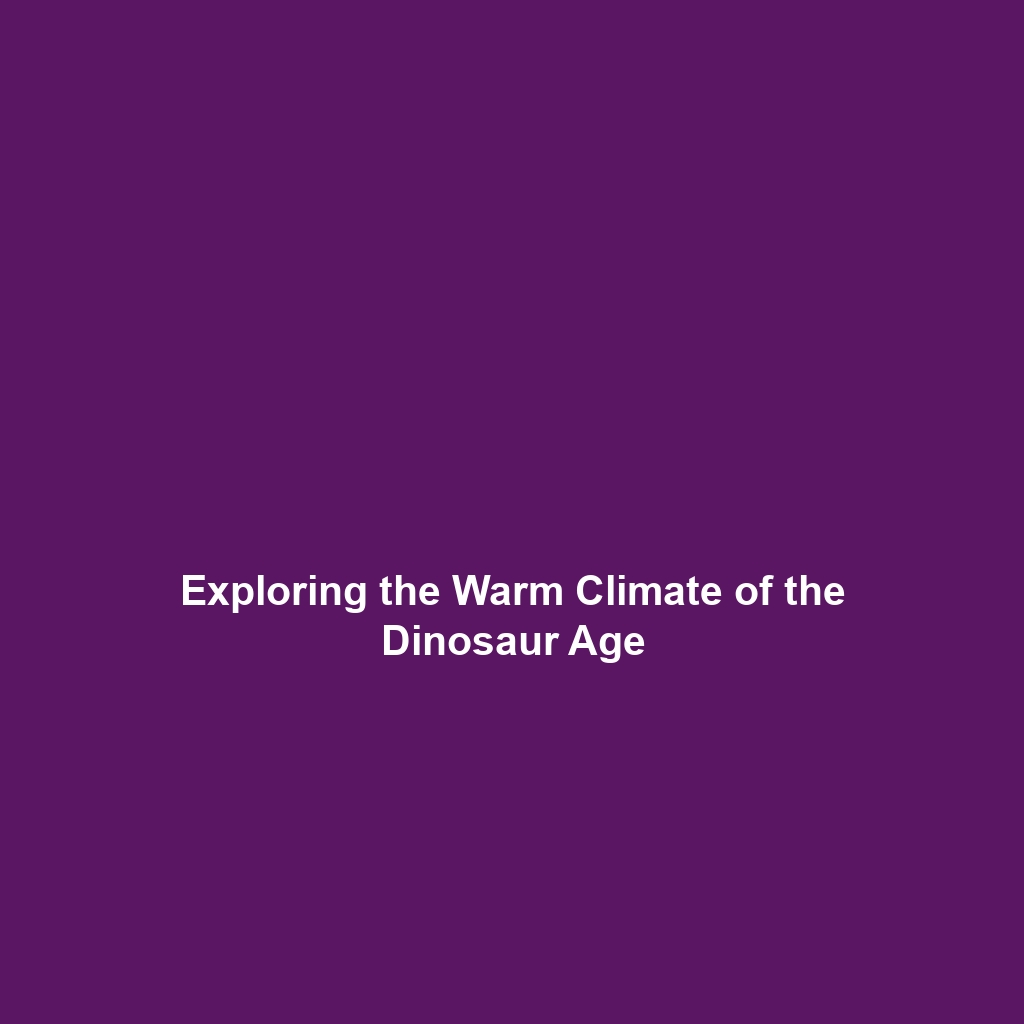Mesozoic Era Climate (252–66 Million Years Ago)
Introduction
The Mesozoic Era, spanning from 252 to 66 million years ago, marks a pivotal chapter in Earth’s climate history. This era, often dubbed the “Age of Reptiles,” is characterized by significant climatic events that influenced the evolution and survival of numerous species, including dinosaurs. Understanding the Mesozoic Era Climate reveals vital insights into the shifting patterns of temperature and precipitation that shaped prehistoric ecosystems. Its study not only provides a window into the past but also informs our current understanding of climate change.
Key Concepts
The Climatic Conditions of the Mesozoic Era
The climate during the Mesozoic Era was notably warmer and more humid than today, exhibiting a range of environments from lush forests to arid deserts. Key concepts include:
- Paleoenvironment: Understanding the diverse habitats that thrived during this era.
- Temperature Fluctuations: Analyzing the global temperatures that supported a variety of dinosaur species.
- Tectonic Activity: Assessing how continental drift and volcanic activity affected Mesozoic climates.
The Role of Carbon Dioxide
The Mesozoic Era experienced high levels of atmospheric carbon dioxide, which contributed to the greenhouse effect, resulting in milder climate conditions conducive to the proliferation of flora and fauna. The study of Mesozoic Era Climate is integral to the broader narrative of Climate History.
Applications and Real-World Uses
Research into Mesozoic Era Climate has several practical applications, including:
- Geological Mapping: Helps in identifying potential fossil fuels by understanding historic climate conditions.
- Climate Modeling: Provides insights into past climates that can improve current climate models and forecasts.
- Biodiversity Conservation: Allows scientists to study evolutionary adaptations, which can inform biodiversity conservation efforts today.
Current Challenges
Despite the wealth of information available, there are several challenges in studying Mesozoic Era Climate:
- Data Limitations: Fossil records are incomplete, hindering comprehensive understanding.
- Environmental Variability: The diverse climatic zones complicate the reconstruction of a unified climatic narrative.
- Technological Constraints: Current technologies may not yet capture the full breadth of the past climate conditions.
Future Research and Innovations
The future of Mesozoic Era Climate research is bright, with innovations that aim to unravel its mysteries, including:
- Advanced Climate Models: Integrating machine learning to improve simulations of past climates.
- Interdisciplinary Approaches: Combining geochemistry, paleontology, and climatology for comprehensive research.
- Innovations in Remote Sensing: Enhancing techniques for analyzing sediment cores and ice cores for climate data.
Conclusion
Understanding the Mesozoic Era Climate (252–66 million years ago) not only offers a glimpse into a world long past but also serves as an essential component of Climate History. The insights gained from this era help us navigate the complexities of contemporary climate challenges and biodiversity conservation. For further reading on this topic, see our articles on Paleoenvironmental Studies and Current Climate Trends.

